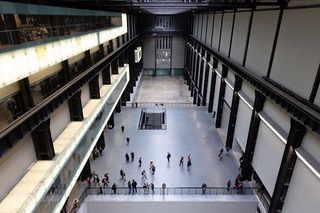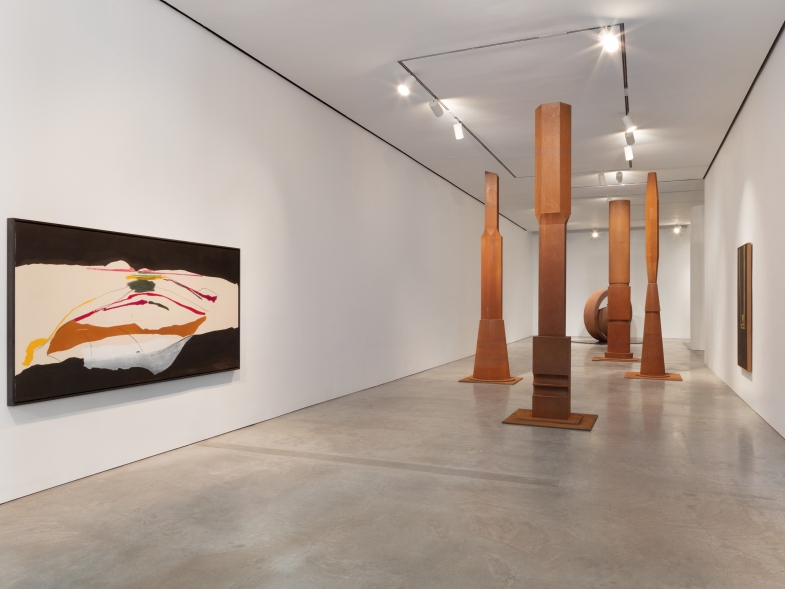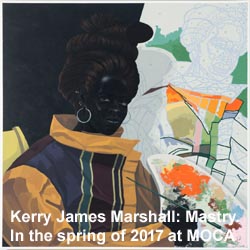| Composer Ryoji Ikeda is known for his performances and installations featuring sound, light, and imagery. Ikeda’s methodology stems from his early work with sound, and is a consistent feature of his compositions. Even with imagery, Ikeda’s fragmented documents are incorporated into his compositions, in the same way that he incorporates elements such as sound and light, as non-signifier codes from which the original meaning has been stripped. Although the elements utilized are simple—on and off, and addition and subtraction—the effect they create can be described as extreme, exploring the limits of the viewer’s perception, and at the same time awakening sensations that lie hidden. |  |
Yuko Hasegawa
Composer Ryoji Ikeda is known for his performances and installations featuring sound, light, and imagery. Ikeda’s methodology stems from his early work with sound, and is a consistent feature of his compositions. Even with imagery, Ikeda’s fragmented documents are incorporated into his compositions, in the same way that he incorporates elements such as sound and light, as non-signifier codes from which the original meaning has been stripped. Although the elements utilized are simple—on and off, and addition and subtraction—the effect they create can be described as extreme, exploring the limits of the viewer’s perception, and at the same time awakening sensations that lie hidden. The aim behind Ikeda’s compositions is to “scan various elements, connect their juxtapositions, and derive the intersections.”
The exhibition, titled +/- [the infinite between 0 and 1], builds on datamatics presented in 2007 by enhancing the visual elements. datamatics is a new series of works in which Ikeda attempted to recapture the world that we perceive as data reduced to the smallest possible unit, such as sine waves and pixels, then using these to create a totally different experience of the world we live in. This approach also reflects Ikeda’s metaphysical interest in the mathematical concept of infinity involving large cardinals that transcend a world built with constructible sets. Initially focused on the similarities between the aesthetics of music composition and mathematics, Ikeda’s art then evolved through his view of the sublimity of infinity as perceived through set theory. The massive amount of data accumulated from various sources is used to compose countless numbers and geometric diagrams, which are then projected onto a gallery wall at Museum of Contemporary Art, Tokyo (MOT) that is 24 meters in width and six meters in height. The data changes at a speed that exceeds our ability to identify individual numbers. The effect is to convert, into data, the reality that we are confronted with, that is, the elements of our “external and internal world.” Ikeda’s work is a metaphor, one that is highly critical of a world where we are bombarded with massive levels of political, economic, social, and cultural information over which we have little control.
Ikeda’s exhibition at MOT represents a crystallization of his work to date. The exhibition space, on two levels and covering 25,834 square feet, comprises a black cube in which data is represented by light pixels, and a white cube in which sounds at the boundary of human perception are sensed as vibrations within a completely white environment. Also on display in the white cube are prints in which sheets of paper are filled with minute numerical data etched into the paper. The first print is white in homage to Kazimir Malevich’s White on White, and is followed by a row of ten jet-black squares. The density and the approach to materialization that Ikeda employs have the effect of testing the viewer’s visual limitations.
In the eye of the viewer, the microscopic pixels of the images, that is, the virtual, fuse with the microscopic numbers, or the real and material, resulting in a parallelization of the two. Through this exhibition, Ikeda demonstrates that he is a modernist who succeeds a kind of purism. Simultaneously, he makes it clear that his work represents an “alternative modern” form that is positioned within the context of the fluctuating chaos of our information society, with Ikeda as its ultimate exponent.
























